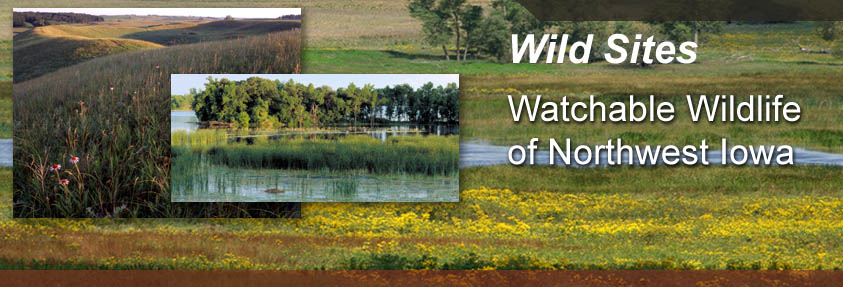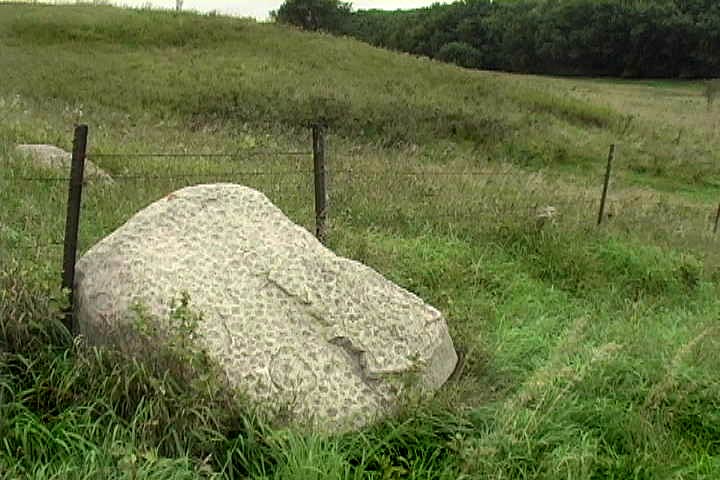 |
||||||||||||||||||||||||
 |
||||||||||||||||||||||||
 |
||||||||||||||||||||||||
| Blood Run
Imagine a department store of colossal proportions! You may have a hint of what Blood Run originally was. Blood Run has long been mentioned in Indian legends as a great encampment where Native Americans once gathered for trade and ceremonial activities. From about 1700 to 1725 A.D., some 5,000 people lived here, forming what was probably the largest Indian community in the upper Midwest. During these years, the land around Blood Run Creek was home to members of the Oneota culture. Prairie History Like most Oneota villages, Blood Run was a bustling place. By boat and on foot, multitudes of Indians from the western plains and from the East arrived to trade and socialize. What sets Blood Run apart from other Oneota villages was its large size. It covered 1,200 acres along both sides of the Big Sioux River in what is now Iowa and South Dakota. Here, the Oneota built hundreds of permanent, circular lodges. Among them children played and Oneota women made pottery, cooked meals, cleaned animal hides, cleared grounds for gardens, and processed grain for storage. Men made bows and arrows, gathered wild plants, and engraved red tablets with the figures of bison. Residents raised corn, beans, squash, and sun flowers. They stored surplus grains in pits dug into gravel deposits. After a few seasons, a storage pit was relegated for use as a trash dump. Excavating these pits, archaeologists can uncover a wealth of information about the daily life of the Oneota and reconstruct certain aspects of Oneota social life. An important hub of trade, Blood Run also served as a center for social and religious activities, as indicated by the burial mounds and other earthworks built here. An 1883 survey documented some 276 mounds - both round and in the shapes of various animals. Decades of farming and railroad construction have destroyed many of the mounds so that now only 76 remain. Also gone is a large enclosure of some 15 acres of heaped earth that may have served as a fortification. Location Description This site has a 2 mile mowed loop trail passing through restored and native vegetation. A small creek, Blood Run, flows through the site. Slowly and continuously over time, Blood Run Creek and the Big Sioux River have eroded loess deposits on the surrounding hillsides, carving a widening path through the rolling landscape. Prairie grasses and encroaching trees help keep erosion in check. Ponds scattered here and there across the region formed when glaciers left depressions in the bedrock, or when a stream changed its course and its abandoned turn became an isolated pool. A famous pitted boulder is found along the path. Pitted by the Oneota, it is a pink granite erratic. An active Bald Eagle nest is located on the site. Hunting is allowed for deer, turkey, and pheasant but must sign up on a list at the CCB office for permission. Also noteworthy is the butterfly mound so known because of the multiple sighting of regal fritillary butterflies. Hunting is allowed - contact the local manager for permission: Craig Van Otterloo, Lyon County Conservation Board 311 First Avenue E, Rock Rapids, IA 51246 Telephone: 712-472-2217Driving Directions and other Information
|
||||||||||||||||||||||||
| Educational Activity: | ||||||||||||||||||||||||
|
Visit Blood Run via Google Map by Clicking HERE! (Please disable your browser's popup blocker before viewing map) |
||||||||||||||||||||||||
|
|
||||||||||||||||||||||||
| Wild Categories | Photo Gallery | |||||||||||||||||||||||